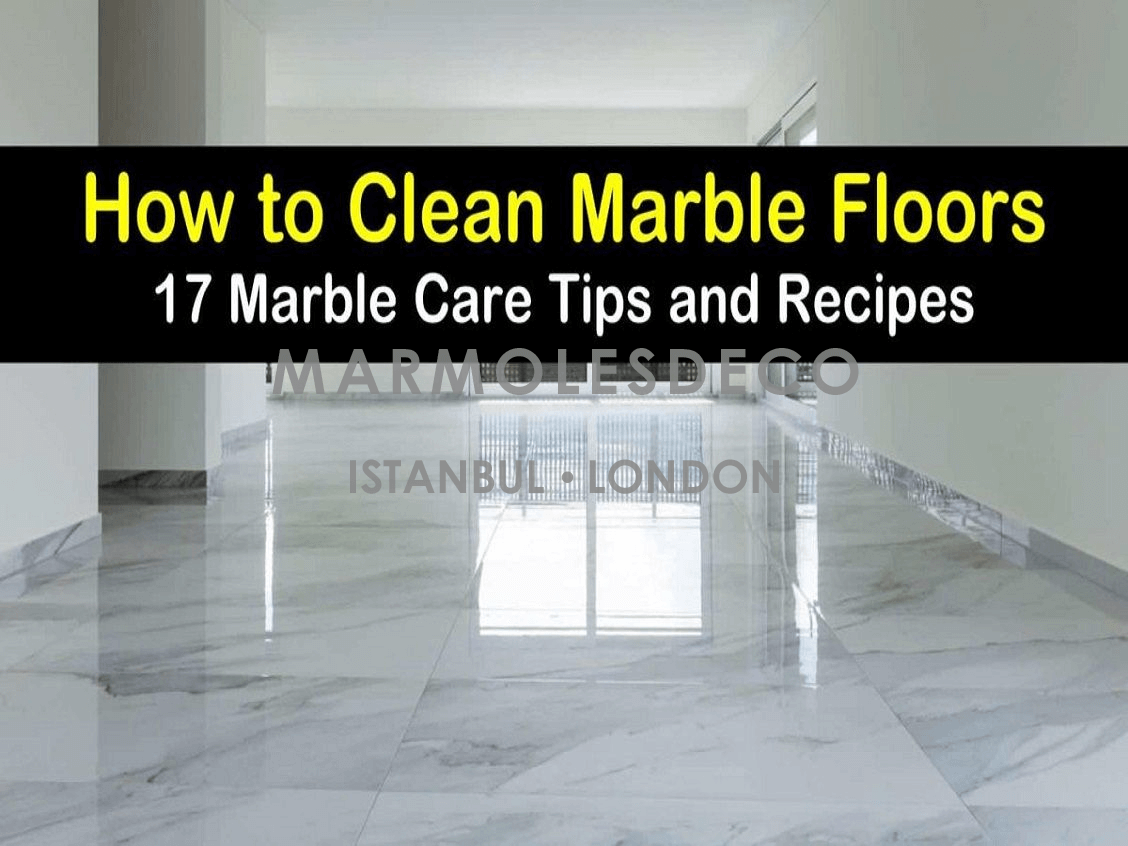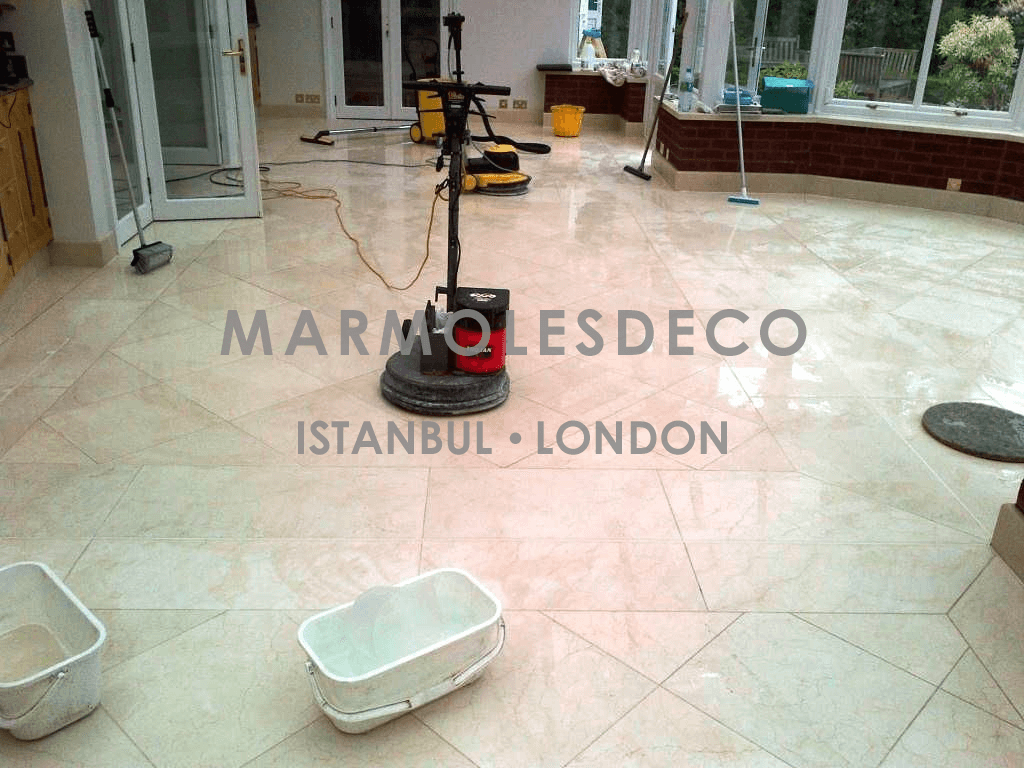Knowing how to clean marble floors will save you the agony of ruining this marvelous illusion and will also ensure these sensitive flooring tiles aren’t destroyed either.
Because cleaning marble floors requires a light touch, there are numerous do's and don'ts you need to follow when choosing a marble tile floor cleaner. We have compiled a list of some of the best-kept secrets and recipes for cleaning these delicate floor tiles. We have also included a helpful collection of advice for what not to use on your marble floors.
When cleaning natural stone flooring, you want to use only the best cleaning products. Some will even argue that the only cleaning solution is a commercial cleaner, but that isn't true. There are plenty of natural ingredients that work well on marble without ruining the material.
The first step to take in any cleaning regimen is to remove as much loose dirt and dust from the area as possible. The best way to take care of this is by using a dust mop or broom to sweep the stray particles away.
Doing this regularly will also prevent gritty pieces of dirt from scratching the surface of your marble flooring. This step will also reduce the potential of spreading dirty water across your clean marble floors when mopping.
An easy way to clean your marble floors is to use a cleaning agent like baking soda. Baking soda is abrasive enough to remove grit and grime from your floors, but gentle enough to clean without scratching the sensitive flooring. You may also want to add a few drops of dish soap to the recipe for greasy stain removal. Use only a phosphate-free dishwashing detergent with no additives.
For the best way to clean marble, start by placing the ingredients in a large container. Apply the cleaning product to your floor using a sponge or wet mop and work in small areas of about two square feet at a time. Rinse the soapy water clean, then dry any remaining liquid using a microfiber mop or cleaning cloth. Your floors will shine.
Another mild soap you can use to keep your floor clean is Castile soap. This detergent comes in multiple forms, including a bar and a liquid version. For our purposes, the liquid version works best and will cut through grease and grime with ease.
Mix the Castile soap with water in the sink or a large bucket, then transfer the mixture to a spray bottle for easier access. Lightly spray the Castile soap across the marble surface, then wipe away using a soft cloth. Rinse with warm water when finished, then buff dry. An excellent natural stone cleaner, Castile soap also works as the perfect homemade cleaning solution for granite.
Although ammonia seems like a harsh cleaner to use on most surfaces, it is safe to use on marble when adequately diluted. Ammonia works well as part of a poultice or even when cleaning on its own.
When it's time to clean a marble tile shower or your marble floors or countertops, remember to wear long sleeves and rubber gloves for protection against the ammonia. Combine the two ingredients in a large bucket. Wipe the floor down with the ammonia solution. Rinse the stone thoroughly when done, and dry the area.
Sealing your marble tile and countertops is essential for preventing problems down the line and making regular cleaning easier. Using a sealant to protect your tiles gives the marble a higher resistance to water and other spills. To apply your sealer, use a lint-free cloth and rub the sealant along the surface, going into small areas at a time.
Wait approximately 40 minutes before applying your second coat of sealant. Once the second coat is applied, ensure any excess sealer is wiped away with a towel. Wait an additional 30 minutes for your second coat to dry.
Your final step for a marble is to wait. Sealants need to cure, which can take up to three days to do correctly. During those three days, these floors or countertops should be off-limits. Afterward, you will have a fantastic finish and an added layer of protection for your floors.
For challenging stains that have already started to penetrate the marble, you need to use a poultice to clean deep within the tiles. This process requires mixing a powdery substance with a solvent to reach those deep-set stains. Here are some powders you can use for the poultice. When making the poultice, add one cup of whatever ingredient you have handy and add water. The amount of water you need depends on the consistency of the treatment. Your combination should look similar in texture and weight to peanut butter or frosting. Once it’s ready for use, slather it over the stain and leave it to sit for up to 48 hours.






 Online Catalog
Online Catalog